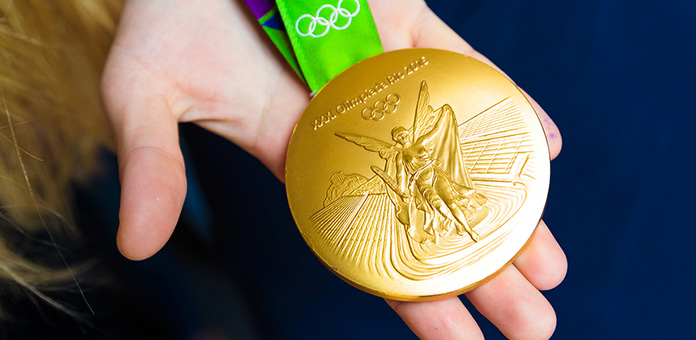
Few symbols of excellence and achievement have moved beyond sports into our everyday lives in a manner comparable to the Olympic Gold Medal. The gleaming yellow metal has always held a most unique position human history as a coveted symbol of wealth and power. When married to the emotions of an Olympic victory crowning one as “the best in the world,” there is no other material that would serve that purpose so well.
The Realities Behind the Symbol
While the original Olympic athletes had to settle for a tiara of olive branches, today’s conquering Olympic heroes literally “take home the gold.” However, there is a great deal that has changed in the modern Olympic medal, and those awarded in Rio are different from any awarded in previous Olympics. While first place in the first modern Olympics was a silver medal (bronze went to second, and there was no third place), gold has been the standard for all successive competitions.
Unfortunately for today’s victors, the last Olympic medals made totally from gold were created in 1912. The medals awarded today are actually struck in sterling silver and then coated with a thin layer of pure gold. The actual amount of the gold coating is only .21 ounces, or 6 grams. 1 This is about 1.2 percent of the total weight of the coin (494 grams of silver). While the designs are left to the discretion of the committees and can be as big as they desire, the final medal must be at least 60 millimeters in diameter and three millimeters thick.
Reacting to the Market
Of course, the coins minted totally of gold in 1912 were awarded when the price of gold was around $21 per ounce. It’s calculated that at today’s gold price of more than $1300 an ounce a single gold medal would cost approximately $22,000, with a total cost of more than $50 million for recognizing just the number one spots on the podium. 2 Instead, according to a report on CNN, the top place awards are worth just under $600 based on current gold and silver prices.
However, the ultimate value of the medals, as with many gold items, exceeds the intrinsic value by a great deal. While many people make a clear distinction between sentimental value and market value, there is a small but fervent market in gold, silver and bronze Olympic medals. Depending on the event, the athlete and other factors, you can actually buy an Olympic medal for as little as $5,000 to $6,000 at auction. Expect to pay much more for a prominent medal – Jessie Owens’ 1936 gold recently went for $1.7 million, and a 1980 Miracle on Ice hockey medal went for $310,700 in 2010.
Additional Sources
2 – https://www.good.is/articles/actual-gold-medal-value


